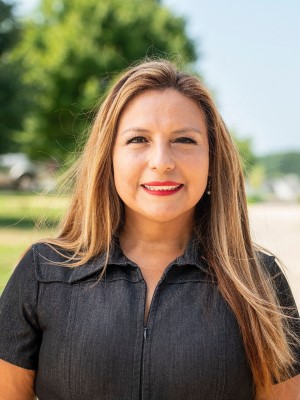2023-09
EMERGENCY RESOLUTION:
Calling for More Community Schools
Sponsored by Del. Elizabeth Guzman (VA)
Reported to the Caucus by the NHCSL Education Task Force
Asm. Selena Gomez (NV), Chair
Unanimously approved by the NHCSL Executive Committee on behalf of the entire Caucus on April 22, 2023.
I. The Community School Model
WHEREAS, community schools are comprehensive asset and needs assessment and coordinated plans allowing local schools and communities to form partnerships in the education process by providing educational, recreational, social, and cultural services for all people in the community – students, parents, families/caregivers, educators, and the community. They provide a sustainable way to support their communities’ physical, emotional and academic goals through a bottom-up school and community transformation, and aid in economic empowerment and stabilization that benefit students and adults alike; and,
WHEREAS, there are currently 10,000 community schools in the United States, representing roughly 6% to 8% of all public schools in the country [1] ; and,
WHEREAS, the American Federation of Teachers (AFT), the National Education Association (NEA), the Coalition for Community Schools, and other coalition partners have called for funding 25,000 community schools by 2025; [2] and,
WHEREAS, community schools are designed to provide comprehensive academic and social services to students by relying on certified teachers who provide quality instruction with special consideration to cultural factors, and collaborating with local partners to provide opportunities to integrate the wider community into each student’s learning experience. This is achieved by following the fundamental principles that must govern the creation of community schools, including the six key practices that have been established in research on the efficacy of community schools, including “An Evidence-Based Strategy for Equitable School Improvement” [3] :
- Powerful student and family engagement.
- Collaborative leadership and shared power and voice.
- Expanded and enriched learning opportunities.
- Rigorous, community-connected classroom instruction.
- Culture of belonging, safety, and care; and
- Integrated systems of support.
WHEREAS, in meeting the holistic needs of low-income students, community schools expand learning time by integrating entities that facilitate student access to direct learning (like English language classes, tutoring and enrichment workshops), or to daily life improvements that impact learning (like healthcare, food assistance, high-speed internet, and housing assistance). External barriers that hinder a student’s ability to grow academically are comprehensively addressed; and,
WHEREAS, community schools keep families and the wider community engaged by involving them in school activities and decision-making processes. Likewise, they address the individual academic needs of students by providing expanded learning time and opportunities through after school tutoring programs and enrichment workshops. Lastly, these schools are designed to be a collaborative effort between teachers, school administrators, municipal agencies and non-profit organizations; [4] and,
WHEREAS, according to the Learning Policy Institute and the National Education Policy Center, community schools that integrate the six key principles satisfy the evidentiary requirements of the Every Student Succeeds Act (ESSA) because students who received integrated student supports scored higher on standardized tests, and boasted higher rates of student retention and lower rates of chronic absenteeism than those who did not; [5] and,
WHEREAS, English learners who received these services received grades similar to those of their English proficient peers; [6] and,
WHEREAS, there is a positive correlation between community schools that incentivize family and community engagement with better social and academic outcomes across all racial and socioeconomic groups; [7] and,
WHEREAS, extended learning times and opportunities provided by community schools have been shown to improve standardized test scores and academic achievement; [8] and,
WHEREAS, collaborative leadership and practices helps build strong bonds of trust between educators, parents/caregivers, students, school administrators and municipalities; [9] and,
WHEREAS, the return on investment of community schools is estimated to be between $3 and $15, depending on the specific services provided;[10] and,
WHEREAS, Congress, the White House, and the Department of Education have recognized the potential of community schools to improve the academic outcomes of students in low income areas by removing barriers to success, and thus allocated $150 million in 2023, doubling the 2022 investment.[11] Additionally, in January 2023, the U.S. Department of Education committed to $63 million for the five-year Full-Service Community School (FSCS) grants to support 42 school districts across the country.[12] And, in November 2023, the U.S. Department of Education announced nearly $74 million in new, five-year Full-Service Community Schools (FSCS) grants to support an additional 30 local educational agencies, nonprofits, and other public or private organizations and institutions of higher education working to expand community schools including by making awards in four new states: Idaho, Missouri, New Hampshire, and Ohio.[13] and,
WHEREAS federal legislation has been proposed to further aid school districts, state entities and non-profits to improve or plan community schools in low income areas, such as the Full-Service Community School Expansion Act of 2021,[14] which would increase funding for the Full-Service Community School grants program administered by the Department of Education, and the Communities Serving Schools Act[15] which aims to provide $1 billion dollars in grants to state and local education agencies to be used to finance community school support services[16] ; and,
II. Hispanics and Community Schools
WHEREAS, Community Schools present an opportunity to remove barriers to academic achievement and alleviate socioeconomic disparities among Hispanic students by providing support services that meet their specific needs and those of the communities they serve, in coordination with local and state agencies and non-governmental organizations; and,
WHEREAS, the National Center for Education Statistics estimates that there are 49.7 million students enrolled in public primary and secondary schools in the United States[17] , of which 14.1 million students are Hispanic, accounting for 28% of the overall student population,[18] a share that will only increase;[19] and,
WHEREAS, the percentage of students attending schools in high poverty areas was the highest among Hispanic students at 38%. [20] Research has shown that schools that serve students from high poverty areas commit fewer resources per pupil. In fact, poor non-white school districts receive significantly less funding than poor white districts; [21] and,
WHEREAS, inadequate investment in school districts that serve low income students also means fewer quality resources will be available for these students and their teachers, which translates to lower test scores, higher dropout rates, lower graduation rates, chronic absenteeism and lower postsecondary education enrollment rates, all issues which impact Hispanic kids, as this Caucus highlighted in NHCSL Resolution 2019-11, Addressing Chronic Absenteeism in Schools and Resolution 2018-20, End School Lunch Shaming; [22] and,
WHEREAS, the community school model has been shown to be effective in improving academic outcomes of minority students from underprivileged backgrounds. A review of 143 studies on community schools conducted by the Learning Policy Institute showed that, on average, community schools lead to decreases in chronic absenteeism and disciplinary referrals while increasing reading proficiency, and parent engagement. [23]
V. Conclusions
THEREFORE, BE IT RESOLVED, that the National Hispanic Caucus of State Legislators affirms its commitment to remove barriers to academic success by embracing the community school approach for students, parents, families/caregivers, and educators to form partnerships with community leaders to provide the services they require for students to succeed; and,
BE IT FURTHER RESOLVED, that the National Hispanic Caucus of State Legislators urges government institutions and school officials to transform existing public schools into community schools to better serve students, their parents and the community; and,
BE IT FURTHER RESOLVED, that the National Hispanic Caucus of State Legislators joins the call made by the Coalition for Community Schools for funding 25,000 community schools by 2025; and,
BE IT FINALLY RESOLVED, that the National Hispanic Caucus of State Legislators calls upon Congress to enact the Full-Service Community School Expansion Act or similar legislation to provide states the necessary funding to expand existing community schools and sustainably establish new ones.
AT THE REQUEST OF THE EDUCATION TASK FORCE, AND IN ACCORDANCE WITH THE IMMEDIATE NEEDS PROCEES OUTLINED IN THE BYLAWS, THE EXECUTIVE COMMITTEE UNANIMOUSLY APPROVED THIS RESOLUTION ON APRIL 22, 2023, AT ITS MEETING IN SAN JUAN, PUERTO RICO.
[1] Camera, Lauren. “‘Community Schools’ See Revival in Time of Heightened Need.” US News & World Report, August 25, 2021. https://www.usnews.com/news/education-news/articles/2021-08-25/community-schools-see-revival-in-time-of-heightened-need.
[2] Institute for Educational Leadership. https://www.communityschools.org/
[3] Oakes, Jeannie, Anna Maier, and Julia Daniel. “Community Schools: An Evidence-Based Strategy for Equitable School Improvement.” Learning Policy Institute, 2017. https://learningpolicyinstitute.org/product/community-schools-equitable-improvement-brief
[4] Center for American Progress. “Building Community Schools Systems,” August 22, 2018. https://www.americanprogress.org/article/building-community-schools-systems/
[5] Jeannie Oakes, Anna Maier, and Julia Daniel, “Community Schools: An Evidence-Based Strategy for Equitable School Improvement,” Learning Policy Institute, 2016. https://learningpolicyinstitute.org/product/community-schools-equitable-improvement-brief
[6] Center for American Progress. “Building Community Schools Systems,” August 22, 2018. https://www.americanprogress.org/article/building-community-schools-systems/
[7] Center for American Progress. “Building Community Schools Systems,” August 22, 2018. https://www.americanprogress.org/article/building-community-schools-systems/
[8] Center for American Progress. “Building Community Schools Systems,” August 22, 2018. https://www.americanprogress.org/article/building-community-schools-systems/
[9] Center for American Progress. “Building Community Schools Systems,” August 22, 2018. https://www.americanprogress.org/article/building-community-schools-systems/
[10] Deich, Sharon, and Meghan Neary. “Financing Community Schools: A Framework for Growth and Sustainability.” Partnership for the Future of Learning, 2020. https://communityschools.futureforlearning.org/assets/downloads/Financing-Community-Schools-Brief.pdf
[11] The White House. “FACT SHEET: Biden-Harris Administration Announces Efforts to Support Community Schools.” The White House, January 18, 2023. https://www.whitehouse.gov/briefing-room/statements-releases/2023/01/18/fact-sheet-biden-harris-administration-announces-efforts-to-support-community-schools/.
[12] Long, Cindy. “Federal Funding for Community Schools Hits Historic Levels | NEA,” n.d. https://www.nea.org/advocating-for-change/new-from-nea/federal-funding-community-schools-hits-historic-levels#:~:text=In%20December%2C%20a%20bipartisan%20funding,to%20%24150%20million%20in%202023.
[13] U.S. Department of Education. “Biden-Harris Administration Announces Nearly $74 Million to Expand Full-Service Community Schools.” November 28, 2023. https://www.ed.gov/news/press-releases/biden-harris-administration-announces-nearly-74-million-expand-full-service-community-
[14] Congress.gov. "S.385 - 117th Congress (2021-2022): Full-Service Community School Expansion Act of 2021." February 23, 2021. https://www.congress.gov/bill/117th-congress/senate-bill/385
[15] Congress.gov. "Text - H.R.8126 - 116th Congress (2019-2020): Communities Serving Schools Act of 2020." August 28, 2020. https://www.congress.gov/bill/116th-congress/house-bill/8126/text.
[16] Congress.gov. "Text - H.R.8126 - 116th Congress (2019-2020): Communities Serving Schools Act of 2020." August 28, 2020. https://www.congress.gov/bill/116th-congress/house-bill/8126/text.
[17] National Center for Education Statistics. “Enrollment and Percentage Distribution of Enrollment in Public Elementary and Secondary Schools, by Race/Ethnicity and Level of Education: Fall 1999 through Fall 2031,” n.d. https://nces.ed.gov/programs/digest/d22/tables/dt22_203.60.asp.
[18] “COE - Racial/Ethnic Enrollment in Public Schools,” n.d., https://nces.ed.gov/programs/coe/indicator/cge/racial-ethnic-enrollment
[19] National Center for Education Statistics. “Enrollment and Percentage Distribution of Enrollment in Public Elementary and Secondary Schools, by Race/Ethnicity and Region: Selected Years, Fall 1995 through Fall 2030,” n.d. https://nces.ed.gov/programs/digest/d21/tables/dt21_203.50.asp?current=yes
[20] National Center for Education Statistics. (2023). Concentration of Public School Students Eligible for Free or Reduced-Price Lunch. Condition of Education. U.S. Department of Education, Institute of Education Sciences. Retrieved 7/19/23, from https://nces.ed.gov/programs/coe/indicator/clb.
[21] “23 Billion,” Edbuild, February 2019, https://edbuild.org/content/23-billion#CA
[22] See also Rich, Motoko, Amanda Cox, and Matthew Bloch. “Money, Race and Success: How Your School District Compares.” The New York Times, May 30, 2018. https://www.nytimes.com/interactive/2016/04/29/upshot/money-race-and-success-how-your-school-district-compares.html.
[23] Center, Ed, Elisa Rassen, and Jessica Gunderson. 1BC. “Leveling the Playing Field.” United Way of the Bay Area.


